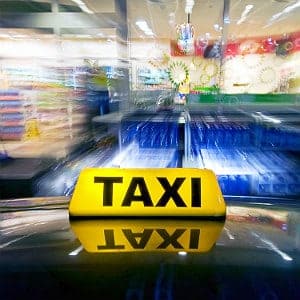On November 7th, 2014, New York City's traffic speed limit will change to 25 MPH unless otherwise posted. Why? It's all part of Mayor Bill de Blasio's new safety initiative: Vision Zero.

According to recently-released crash reports, available on NYC OpenData, there are an average of 523 motor vehicle accidents in New York City every day. Around 20% of those crashes result in serious injury or death. Obviously, the problem is huge, and Vision Zero promises to touch the lives of every driver, cabbie, pedestrian, and cyclist traveling our city's streets.
The very release of this crash data is itself an aspect of Vision Zero. Before the safety initiative's adoption, traffic collision records were not freely available. WNYC has a great article on OpenData's purpose and potential uses here.
As we see with the setup of OpenData, the first aspect of Vision Zero is transparency. By giving academics and policymakers direct access to crash reports, de Blasio wants to make the work of accident research easier. This change gets to the heart of Vision Zero: more than a program of policy and regulation changes handed down from on-high, Vision Zero is a fundamental reworking of how we approach traffic collisions as a society.
Before Vision Zero, state and local governments would design traffic safety initiatives based on a series of monetary calculations. Policymakers would place an economic value on a human life, then figure out how much it would cost to improve road safety and save that life. This amounted to a cost-benefit analysis: is it worth investing in road safety to save lives? Or is there something better we can do with our money?
Vision Zero is built on the principle that "life and health can never be exchanged for other benefits within the society." Essentially, cost-benefit analysis isn't the right way to think. Instead, our money should always be put to work in support of public good, and there's no public good more essential than health and safety. Rather than viewing traffic collisions as "accidents," reducible to human error, we have to think about them as "preventable incidents." And preventing accidents comes down to making roads more "self-explaining" and "forgiving."
This is where the second aspect of Vision Zero becomes apparent: roadway redesign. Instead of placing the burden on individual drivers and negligent behavior, New York City wants to make its streets easier to drive. "Self-explaining" roads are obvious: you know where you should be, and what you should do. "Forgiving" roads are designed to reduce the impact of traffic accidents when they occur. In the years to come, we can expect numerous changes to the city's street system, including clearer signage and new barriers.
But Vision Zero doesn't neglect the part that drivers themselves play in causing accidents. In fact, de Blasio is looking to dramatically expand the city's power to crack down on dangerous drivers.
For a comprehensive overview, check out the "Vision Zero Action Plan 2014" here.
Vision Zero has specific plans for New York City's taxi drivers. Reforms will largely influence the Taxi & Limousine Commission, including enhanced training and driver monitoring systems. The program will also institute a "Taxi Driver Honor Roll" to publicize cabbie driving records.
For more information on similar topics, visit our blog on the experienced taxi cab accident lawyers representing pedestrians injured by cabs in NYC.
New York City's adoption of the Vision Zero program has one major precedent: Sweden. Sweden pioneered the model and currently offers consulting services to countries and cities that want to implement the program for themselves. So has it worked for the small Scandinavian country?
Sweden's traffic collision numbers are impressive. Pedestrian deaths have been cut by 50% in the last five years. And while total traffic volume has steadily increased since Vision Zero's implementation in 1997, the number of traffic fatalities has continued to drop. You can find graphs and numbers on the Vision Zero Initiative's website.
Only time will tell whether Sweden's safety success can be translated into English. Several major American cities, including San Francisco and Boston, are adopting the principles of Vision Zero, too. We'll be monitoring these changes as they come, so stay tuned for more analysis in the next few months!
Banville Law offers so many opportunities to educate yourself on several major topics such as Vision Zero or understanding the NYC cab accident statutes of limitation, available in our next article.